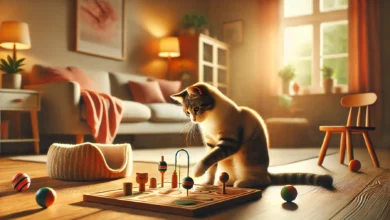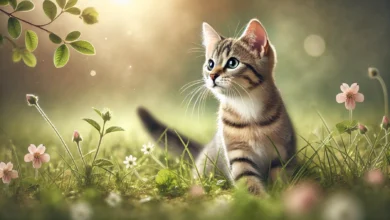Understanding Motivation in Cat Training
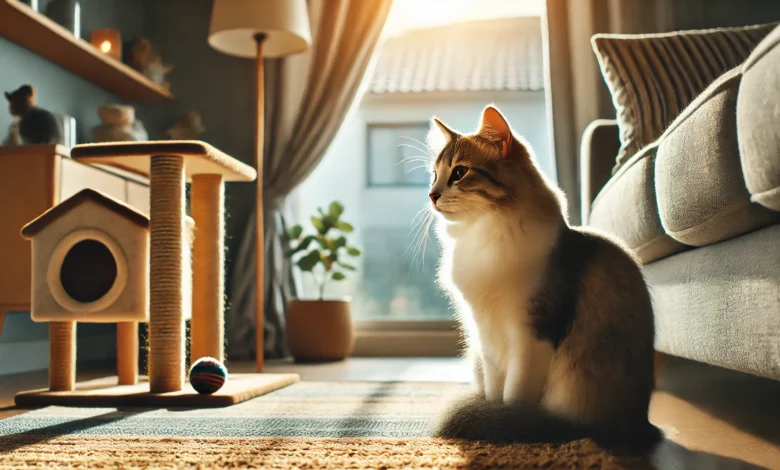
Cats are pretty mysterious creatures, and the mystery only gets heightened when it comes down to training them.
Unlike dogs, which seem to bask in the glory and pleasure of their owners, cats often walk to the beat of their own drum.
Just because your feline friend can be independent does not mean that they cannot be trained.
The secret lies in understanding what motivates them.
In fact, motivation in cat training makes all the difference between frustration and success.
Whether you are trying to teach your cat to come on command or simply discourage bad habits, tapping into the right motivation can unlock new potential in your furry companion.
But what, exactly, will motivate your cat to learn and change?
That’s what we’ll look into in this post.
Table of Contents
What Is Motivation in Cat Training?
In training, motivation in cat training represents a crucial determinant of the speed and effectiveness with which your pet shall learn.
But what does the term ‘motivation’ mean exactly in relation to training cats?
Simply put, motivation is something that encourages your cat to want to do something.
It has to be there—something that takes place—and gets your cat to want to participate in a training session.
Just like humans, cats are motivated by different things.
Some cats will be motivated by food, while others might gravitate more toward playtime or even praise.
You can try and find what works best for your feline companion to get the most out of training.
This finding of their unique preferences gives you a gigantic advantage toward designing highly effective and successful training.
Motivation in cat training can be either internal or external, which, in the world of cats, causes them to behave in a certain way.
It can range from a natural instinct of wanting to chase something to feelings of hunger or the need to be attended to.
This might be due to curiosity on the part of the cat, such as being attracted to jump onto a shelf, or perhaps they are motivated by receiving a reward for using a scratching post instead of scratching furniture.
Motivation in cat training helps improve the effectiveness and speed of learning. Identifying what encourages your cat to participate in training can lead to better results.
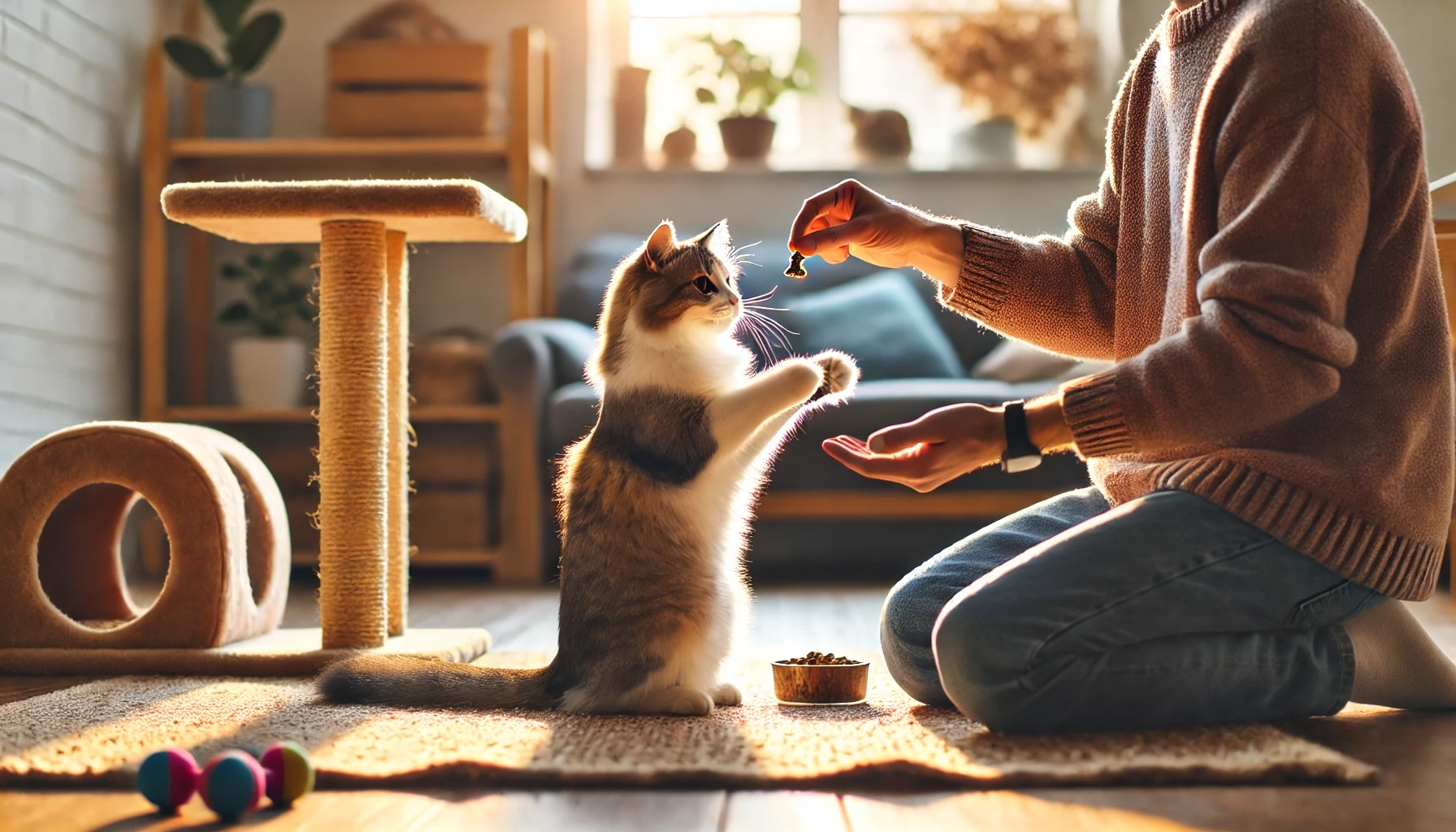
Why Motivation Is Key to Successful Training
Motivation in cat training plays a very integral role in any kind of training, and it is no different with cats.
If the cat is not motivated, then even the most effective training will not work.
In this light, motivation should be thought of as the ‘fuel’ that drives the learning process; without it, your cat would simply lack interest in whatever you are trying to teach.
Think of it this way: Have you ever tried to do something when you weren’t motivated?
It probably didn’t go very well.
The same is true for your cat.
If they are motivated, they are engaged, focused, and much more likely to act positively on your commands.
- Food-based rewards: Offering small treats can increase your cat’s likelihood of following a command.
- Toy rewards: Time spent at play with your cat can be an effective reward after the achievement of something and, for that matter, may be more valuable to them than other kinds of treats.
- Positive reinforcement: Reward good behavior and never punish bad behavior. Cats just respond to rewards.
Motivation fuels the learning process, making your cat more engaged and responsive to commands.
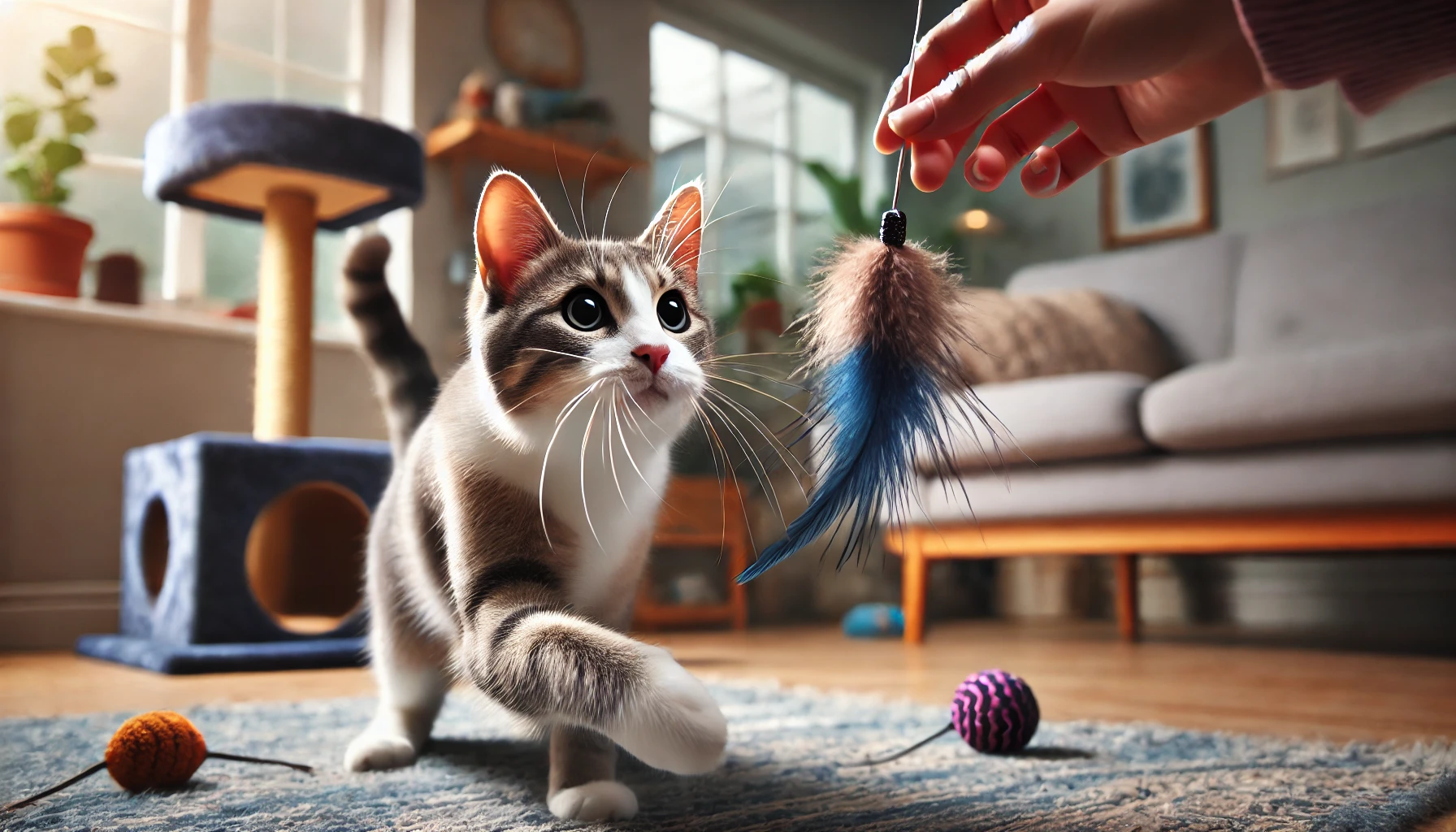
Identifying What Motivates Your Cat
Knowing what motivates your cat is going to go a long way in training them.
This might be food for some cats, while for the more playful ones, it could be time spent playing, and for others, affection.
Basically, this will boil down to knowing what your cat prefers.
Each cat is unique, and what works with one may not work with another.
You’ll find out what gets your furry friend going as soon as you begin testing the rewards and observing their reactions.
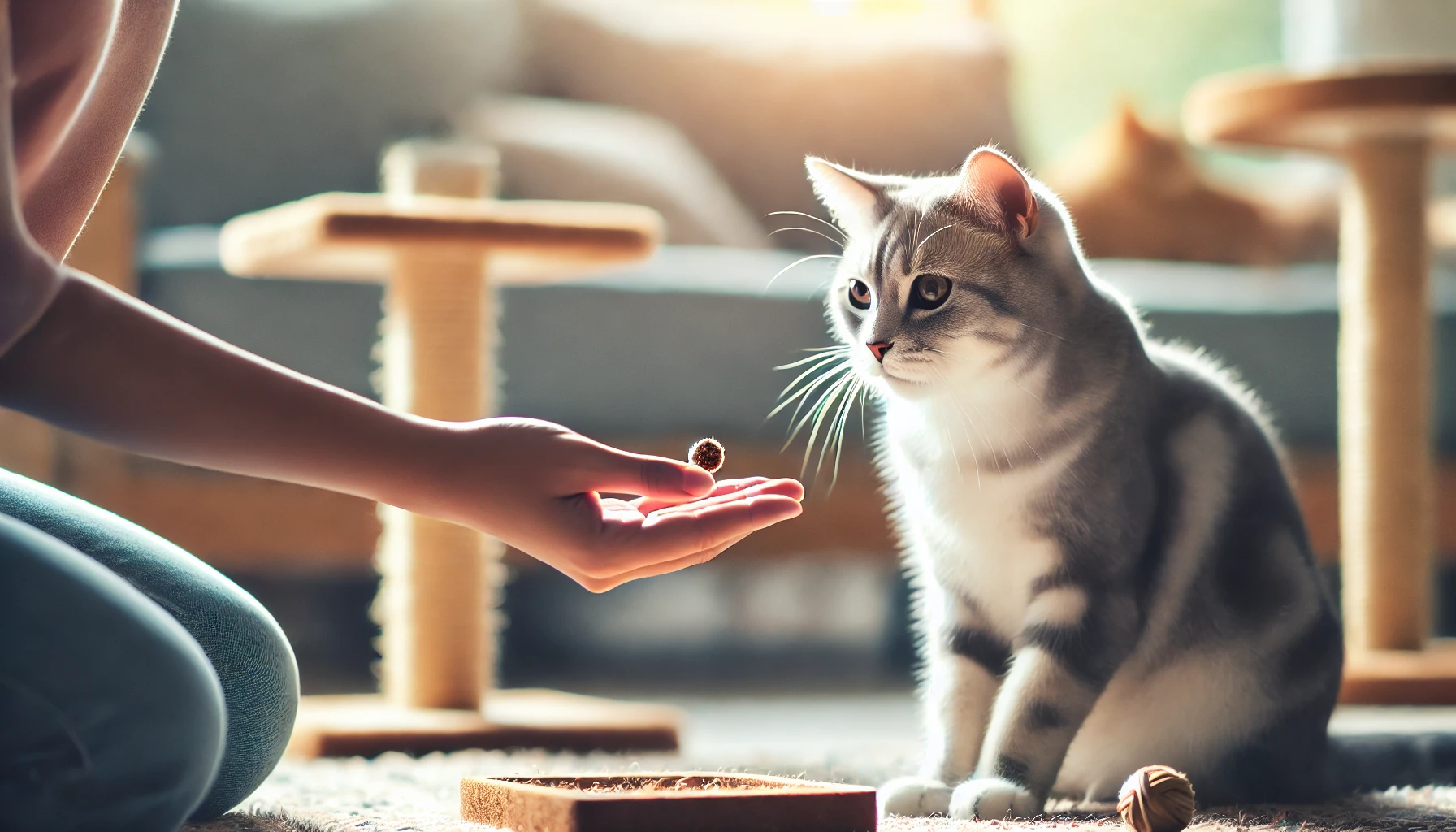
Reward with Food: The Pros and Cons
To cats in general, food is one of the great motivators in cat training.
Being hunting animals by nature, their desire to eat can be positively applied to encouraging friendly behaviors.
Giving them small, tasty treats during training sessions is an excellent way to get their attention and reinforce commands.
However, relying on food alone has some disadvantages.
Eventually, your cat may become less responsive because they will associate every action with food.
That’s why balancing food rewards with other forms of motivation is key to avoiding overdependence.
- Benefits: Food is a major immediate reward that can capture your cat’s attention and motivate them to repeat a wanted action.
- Drawbacks: Too much food can lead to overfeeding, and this decreases effectiveness as your cat might focus more on treats than on learning.
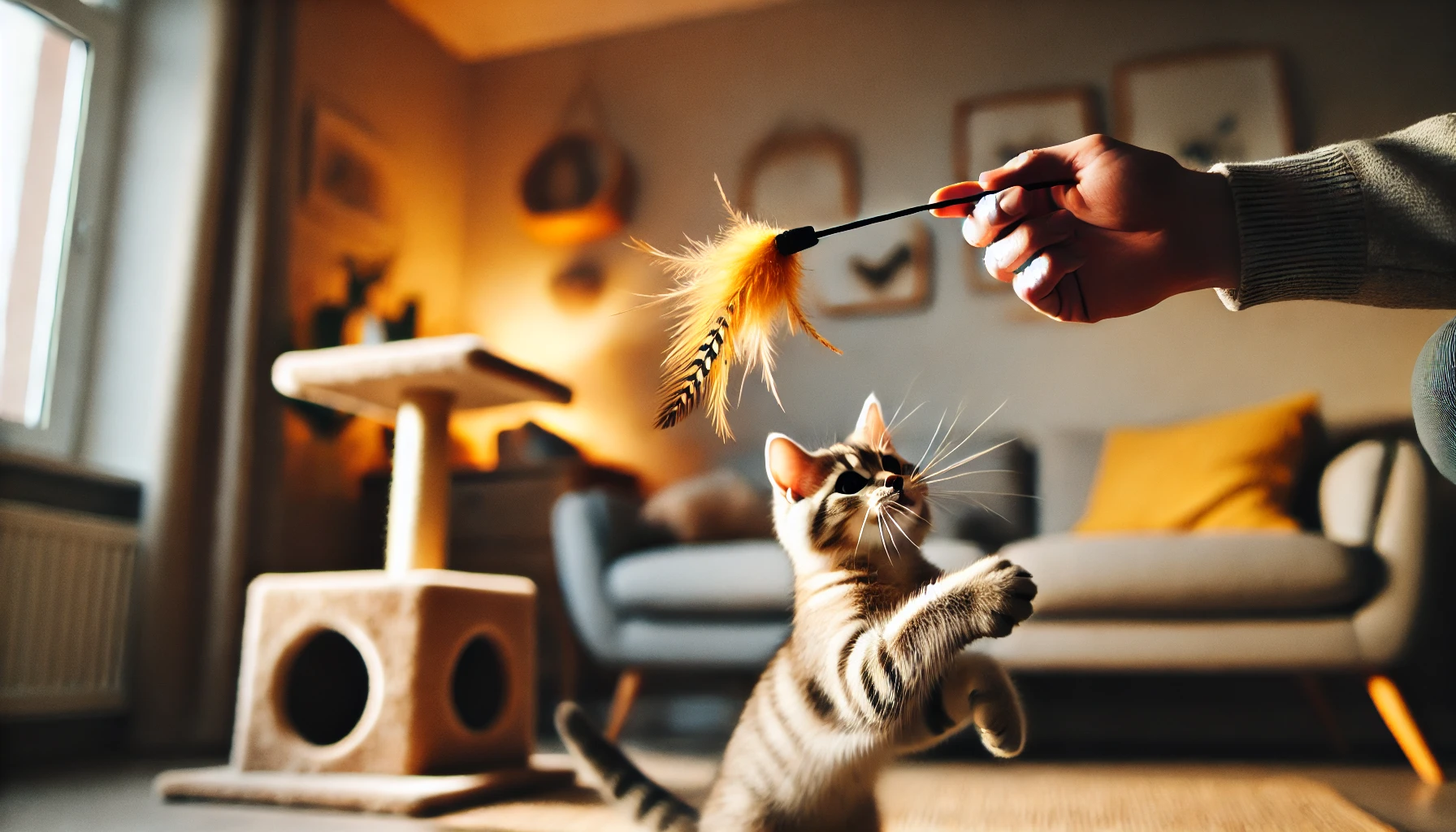
Play and Toys as Rewards in Training
Playtime is another great reward for cats.
Since cats are naturally playful animals, interactive play can be a great motivator when done constructively.
Toys, especially those that resemble prey, trigger their natural hunting instincts.
Rewarding your cat with toys during training can keep them engaged and make the experience fun for both of you.
A short play session after your cat achieves something can be as rewarding as food-based treats.
- Interactive Toys: Toys like feather wands or laser pointers stimulate your cat’s hunting instincts and make them more responsive to commands.
- Rotating Toys: Switch between toys over time to prevent your cat from getting bored and losing interest during training.
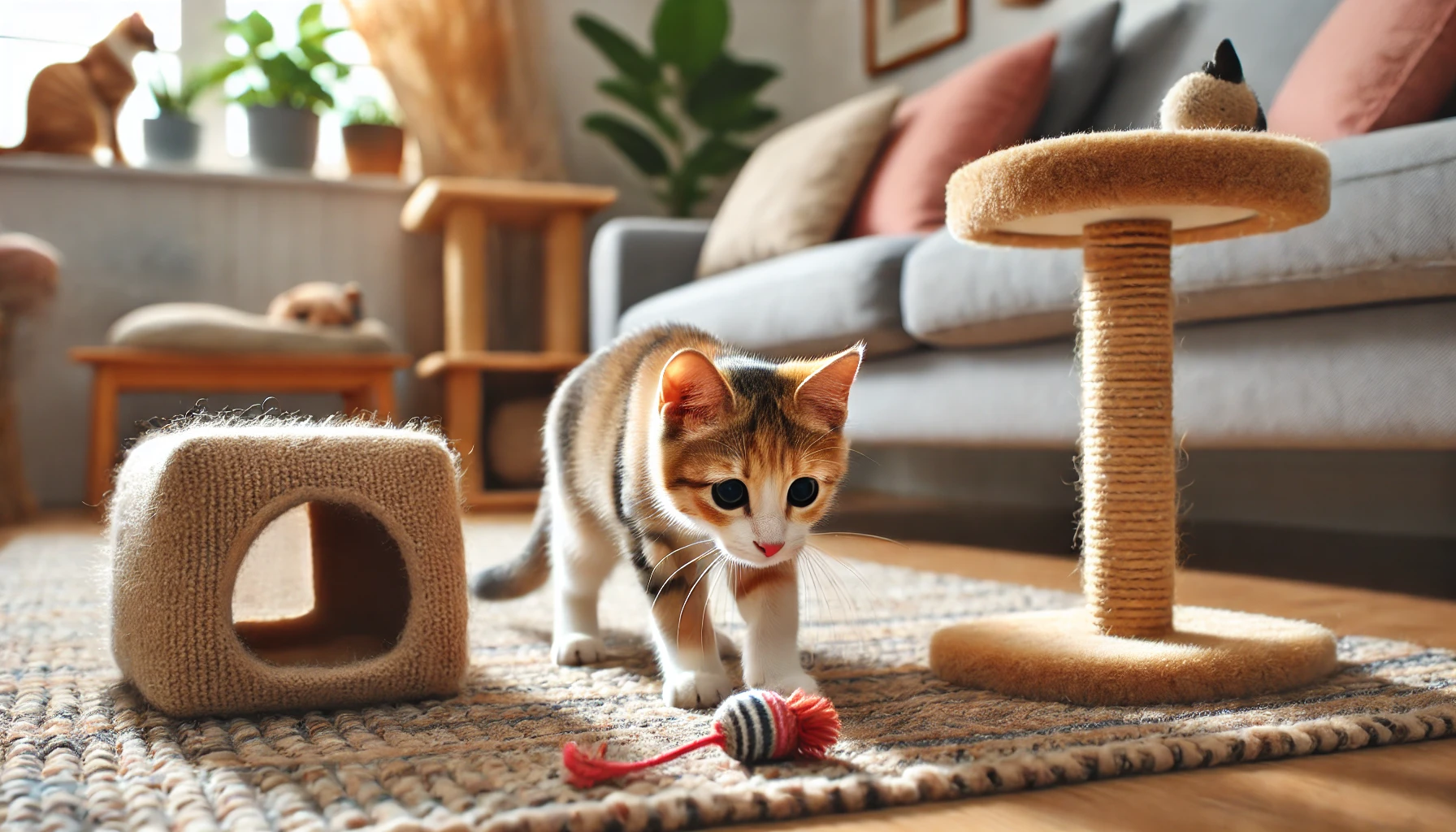
Understanding Natural Preferences
Not every cat responds to food or toys.
Some cats are motivated by affection or attention.
If your cat enjoys being stroked or groomed, these can be used as rewards.
Other cats are driven by curiosity, and providing a new environment to explore or interact with can be a potent motivator.
By observing your cat’s body language and preferences, you can tailor the training sessions to their individual personality.
- Affection-based rewards: Reward your cat’s good behavior with physical affection, such as petting or grooming.
- Exploratory rewards: Allowing your cat to investigate a new area or object can be a stimulating and rewarding activity for them.
Every cat has unique motivators—whether it’s food, toys, or affection, knowing their preference is crucial for effective training.
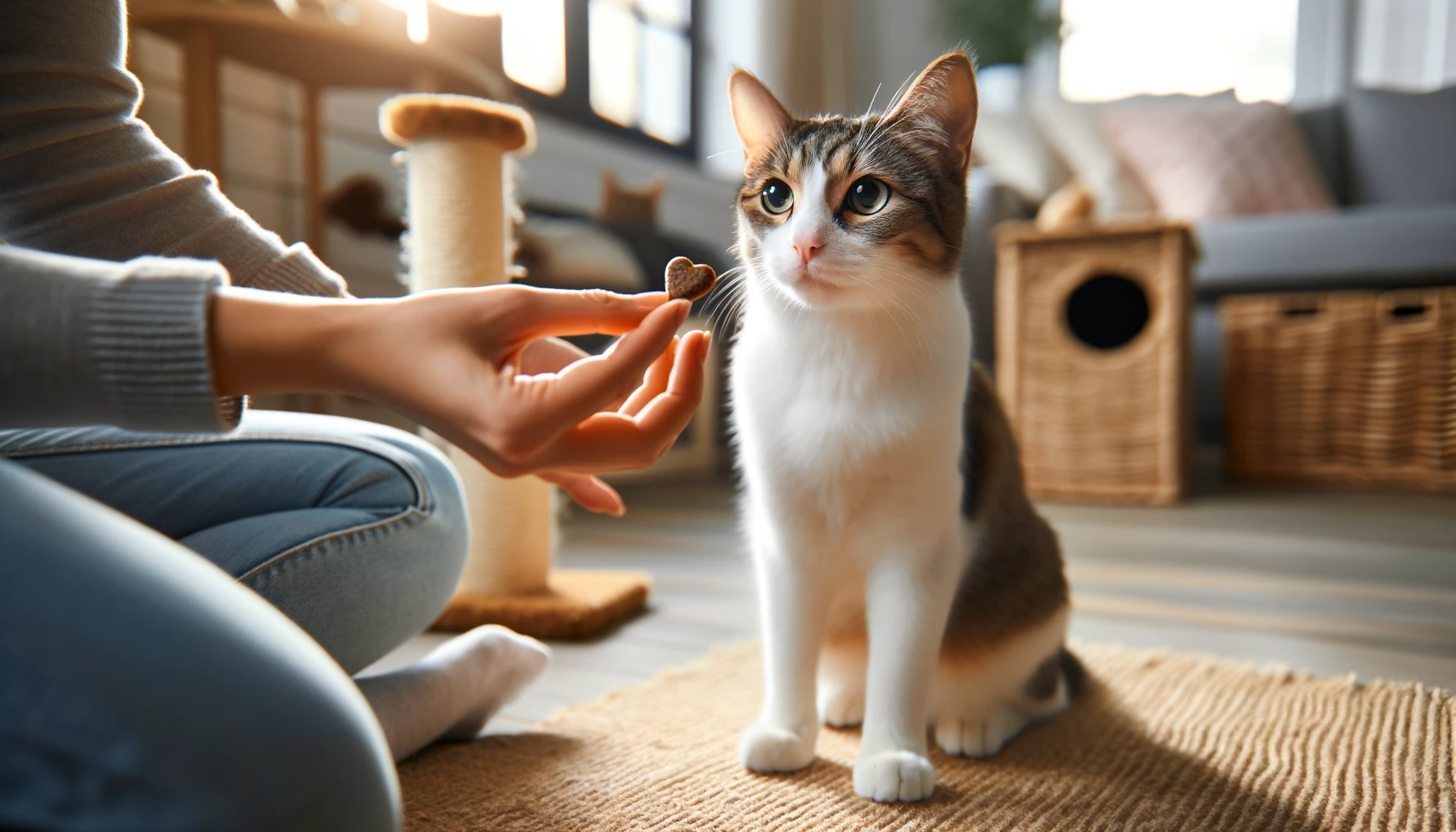
How to Use Positive Reinforcement in Cat Training
Positive reinforcement is one of the most effective means of motivation in cat training, encouraging desired behaviors through rewards.
Cats are sensitive creatures, and they respond much better to rewards than punishments.
Creating a training environment where your cat is motivated to learn through positive reinforcement will make the process enjoyable for both you and your feline friend.
In this regard, proper timing, consistency, and rewards are the keys to successfully achieving positive reinforcement in cat training.

Effectively Using Treats
Treats remain one of the most common tools in positive reinforcement for cat training.
Right at the moment your cat performs a desired behavior, immediately give them a small, tasty treat to establish the connection between the action and the reward.
The quicker the reward is given, the more likely your cat will link the behavior to its positive outcome.
Keep the treats small to avoid overfeeding, and make sure the treat is something your cat enjoys.
- High-value treats: Use treats that are not given regularly to keep your cat motivated.
- Immediate rewards: Give the treat right after the good behavior so your cat knows exactly what they did right.
- Gradual reduction: Over time, gradually reduce the frequency of treats, substituting them with praise or affection as your cat learns.
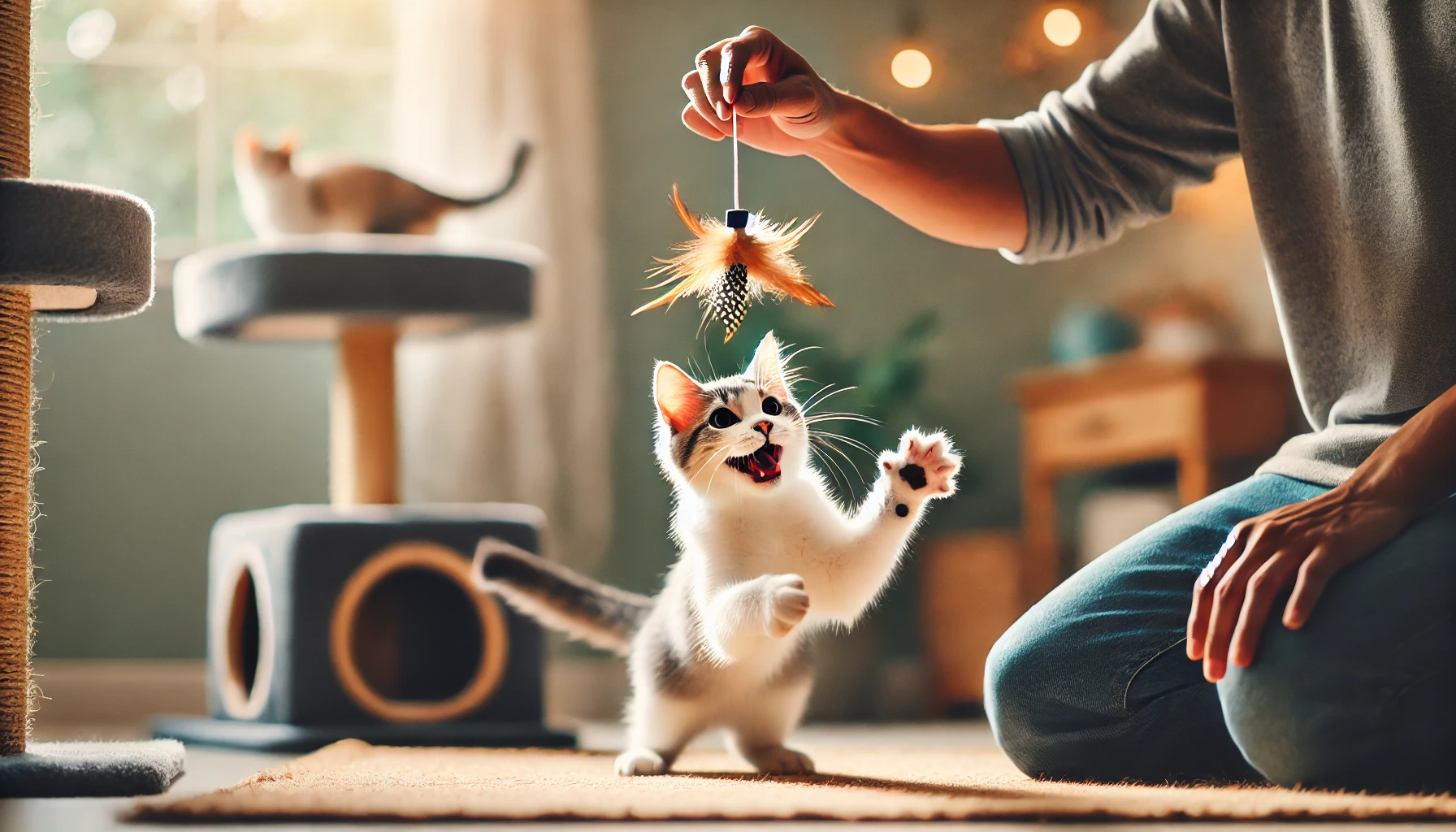
Using Playtime as a Reward
If your cat is more driven by play than food, you can use playtime as a reward for good behavior.
After your cat successfully follows a command or displays desired behavior, reward them with a few minutes of interactive play.
This method taps into your cat’s natural instincts, giving them a chance to express themselves mentally and physically during the training session.
- Engaging toys: Use toys that simulate prey, such as feather wands or small balls, to trigger your cat’s hunting instincts.
- Short, frequent sessions: Keep play sessions short but frequent to prevent your cat from losing interest during training.
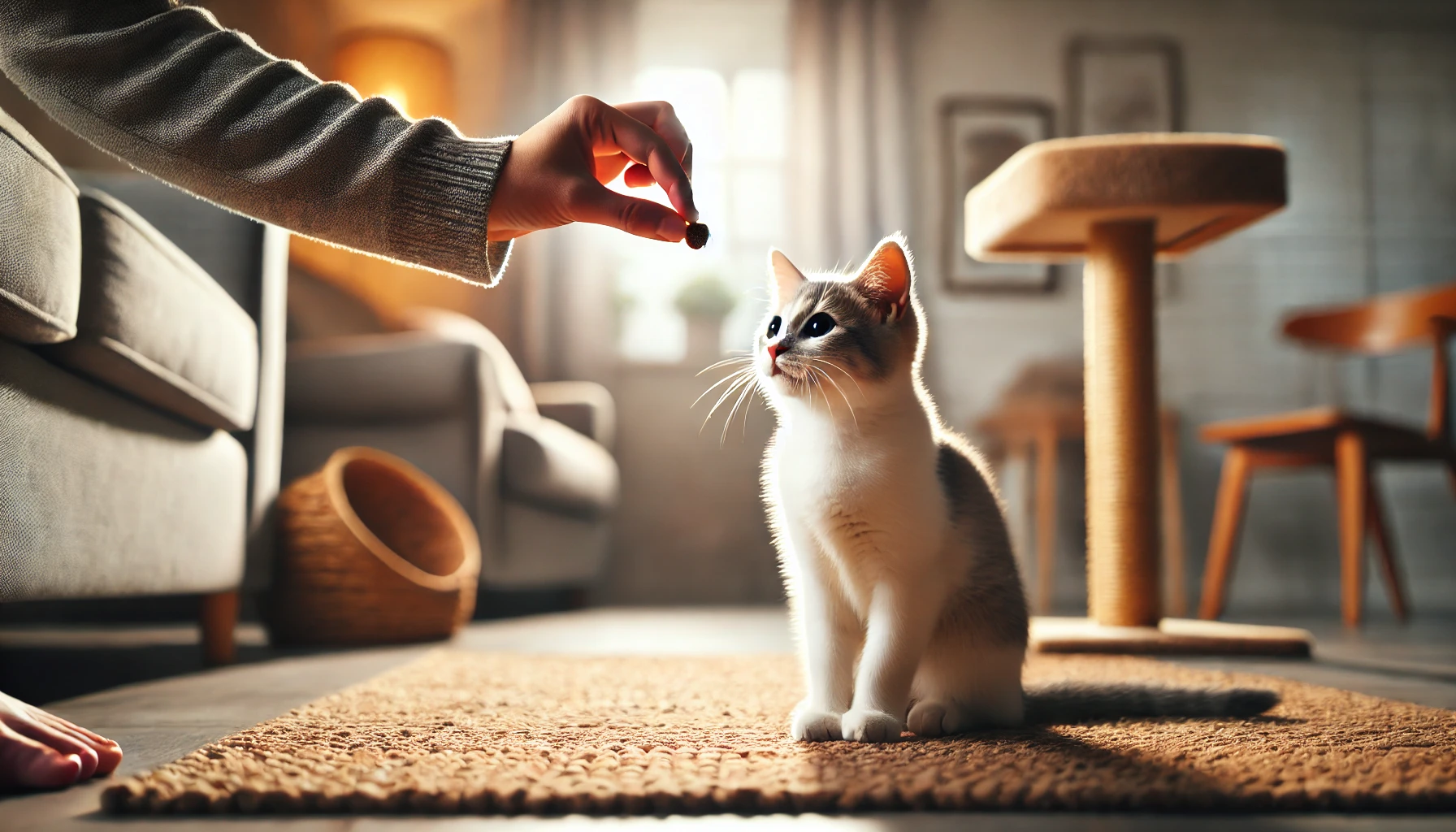
Consistency and Timing of Reinforcement
Consistency is key in positive reinforcement for cat training.
If you only occasionally reward your cat, they may become confused about which behaviors are encouraged.
In the early stages of training, reward the desired behavior every time it occurs.
As your cat becomes more familiar with the commands, you can start phasing out treats and eventually transition to intermittent reinforcement.
- Consistent rewards: Initially reward behaviors consistently, then gradually phase out treats as your cat learns the desired actions.
- Immediate timing: Always reward the behavior right after it occurs for the most effective reinforcement.
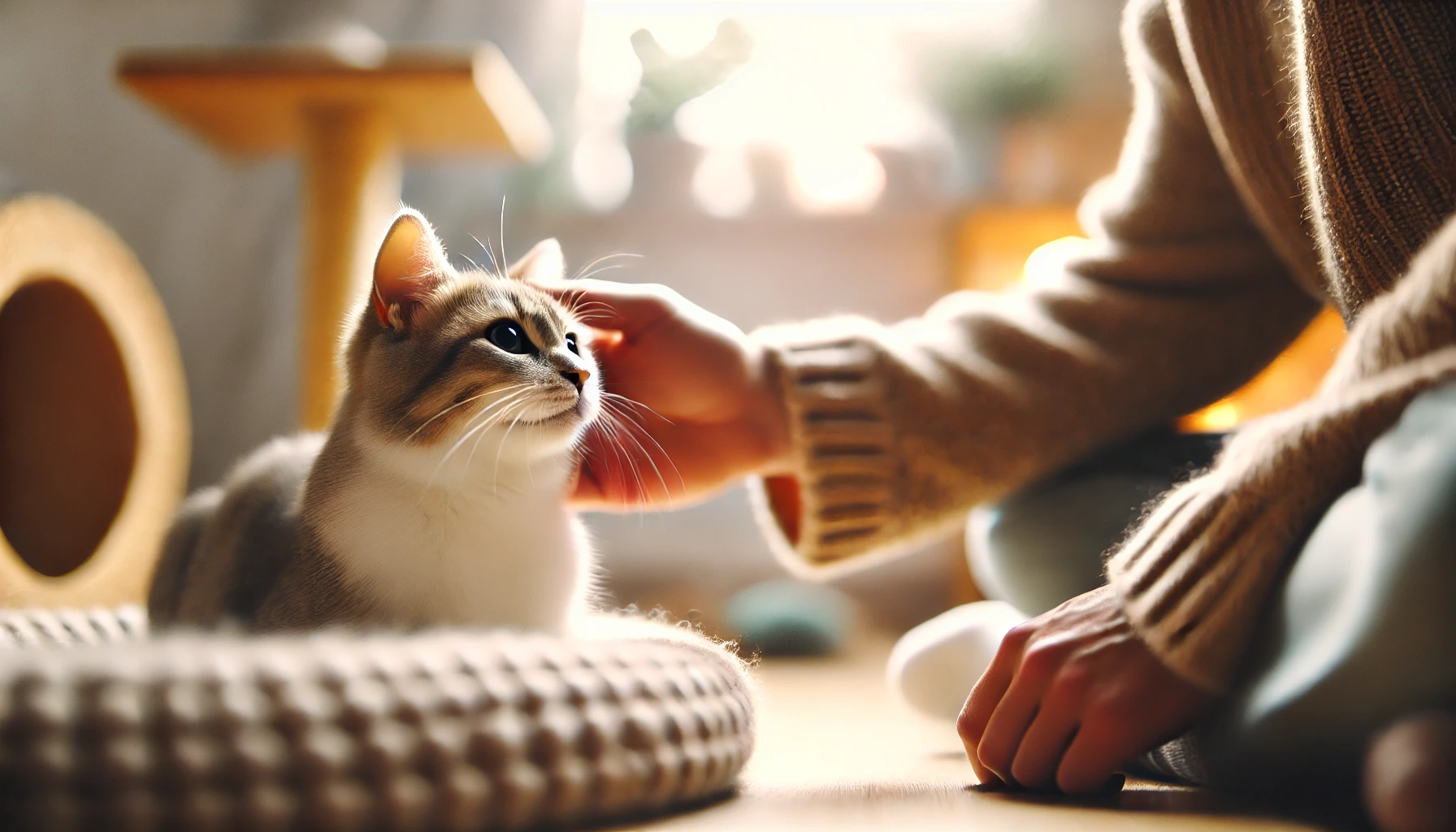
Avoiding Punishments and Negative Associations
Punishment in training should generally be avoided, as it can lead to negative associations and damage the trust between you and your cat.
Punishments may cause fear, stress, and confusion, reducing your cat’s willingness to participate in training.
Instead, reinforce desired behaviors and redirect unwanted ones.
Positive reinforcement builds a stronger bond with your cat, encouraging them to participate willingly in training sessions.
- Redirect behavior: For unwanted behaviors, provide an appropriate alternative, such as using a scratching post instead of furniture.
- Focus on rewards: Concentrate on rewarding good behavior rather than punishing undesired actions.
Positive reinforcement fosters a positive learning environment where cats are more inclined to participate and succeed in training.
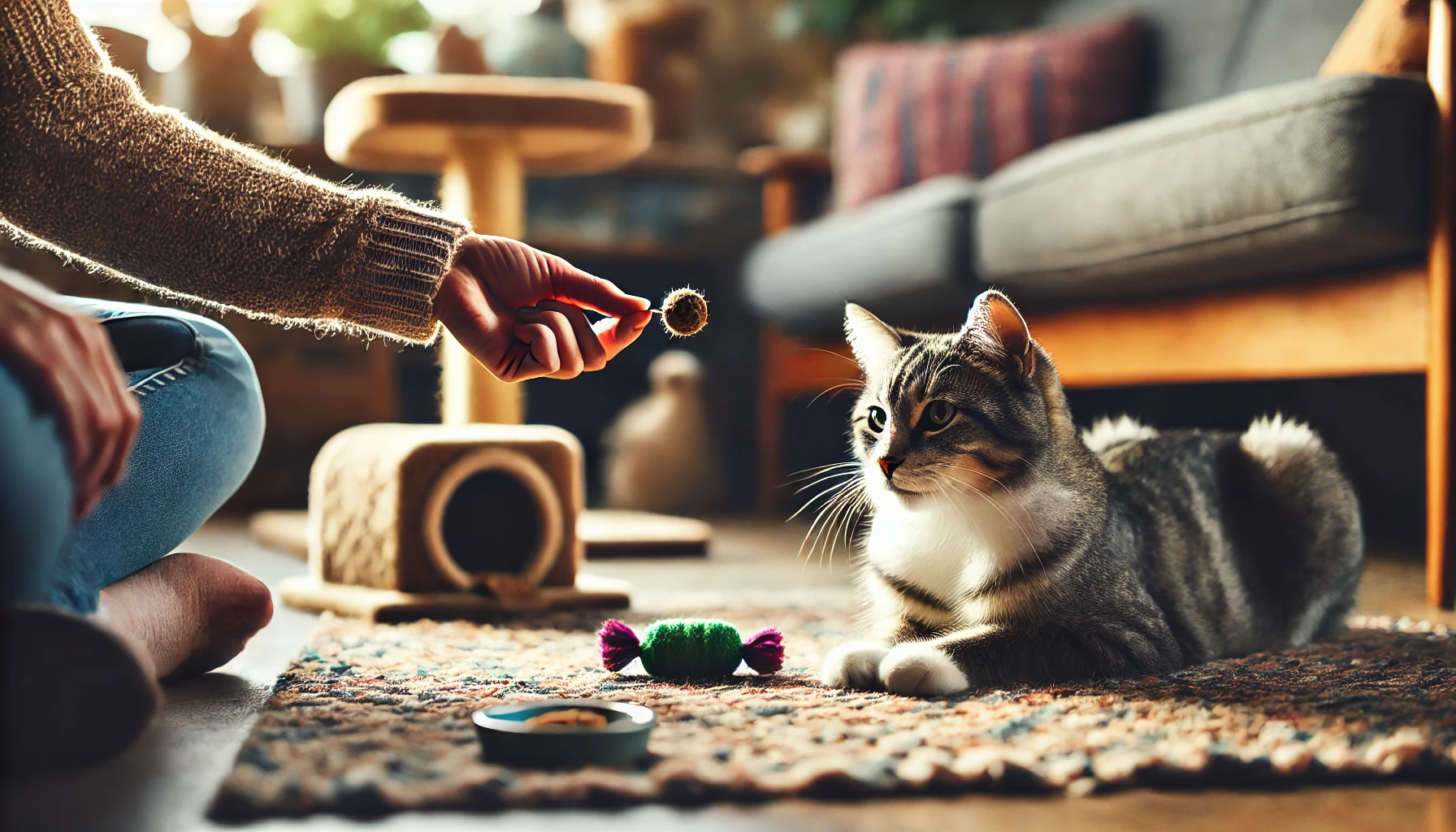
Dealing with Lack of Motivation in Cats
Not every training session will go exactly as planned, and sometimes your feline might act like they don’t want to cooperate at all.
A lack of motivation in cat training may stem from multiple causes, including stress, boredom, or even underlying medical conditions.
Understanding why your cat does not appear motivated will help you determine a better training approach to keep your feline friend engaged.
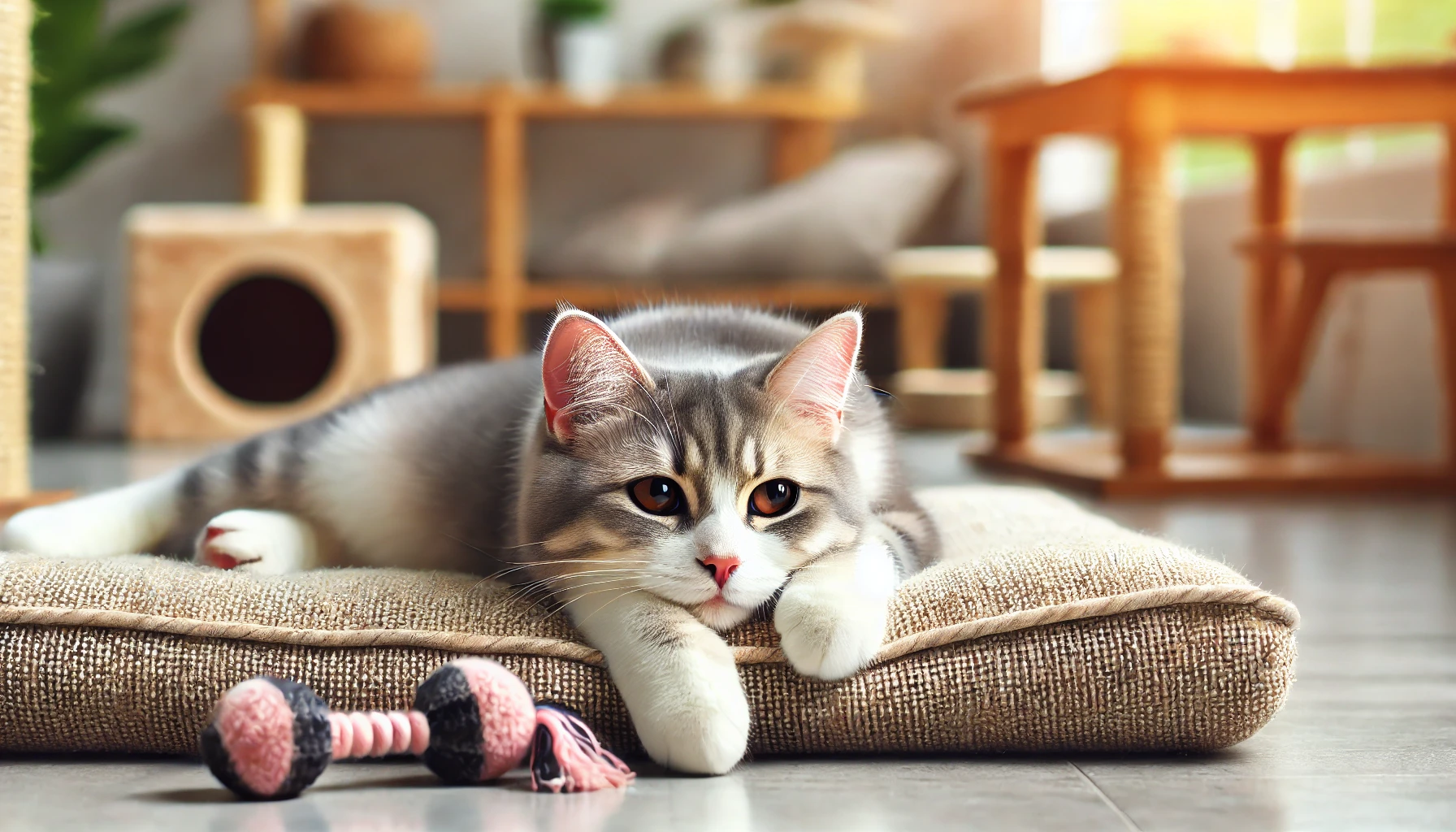
Why Some Cats Seem Unmotivated
There might be a few reasons why your cat appears unmotivated during training.
Cats thrive on routines, and when training becomes repetitive or uneventful, they can lose interest.
Changes in the environment, new people, or even loud noises could stress them out, making them unwilling to participate.
Some cats may also feel sick or lethargic due to health problems, and this could signal deeper issues that require your veterinarian’s attention.
- Boredom: Lack of variety in training exercises can result in disinterest.
- Stress or anxiety: Changes in the household or the addition of new stimuli may make your cat anxious and less cooperative.
- Health issues: A lack of interest could indicate discomfort or illness, and a veterinary checkup may be necessary if symptoms persist.
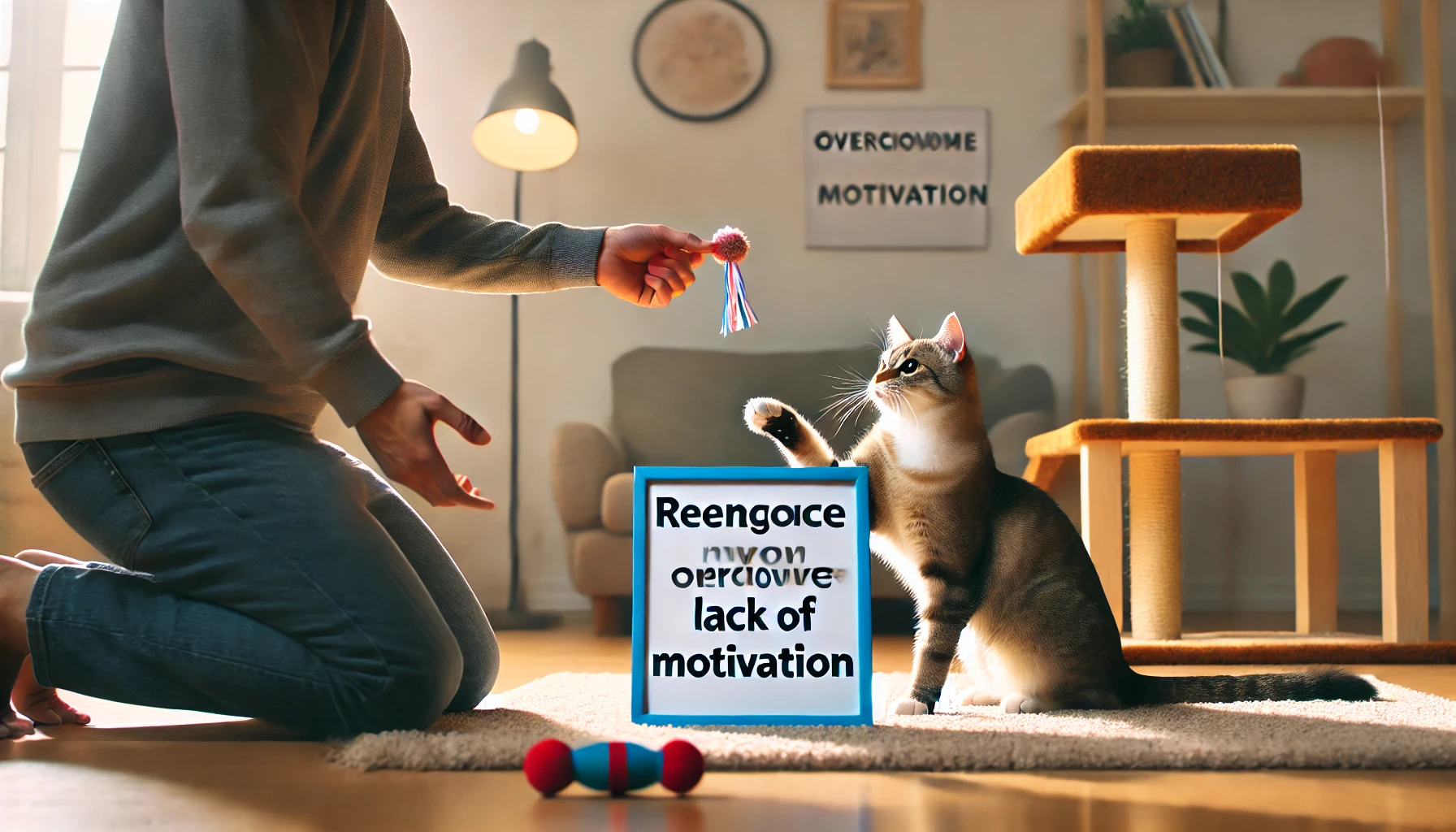
Overcoming Training Issues
To reboot your cat’s motivation in cat training, add some fun and variety to the sessions.
This could mean shorter sessions, using different rewards, or changing locations.
If your cat seems bored, try switching up the rewards by offering treats one time, playtime the next, and affection afterward.
For anxious cats, providing a calm, quiet training space can minimize stress and improve focus.
Always ensure that your cat is physically comfortable and healthy before continuing with training.
- Varying rewards: Use treats, toys, and affection in rotation to maintain your cat’s interest.
- Shorter sessions: Keep sessions brief and focused to prevent overwhelming or boring your cat.
- Minimize stress: Set up a quiet and peaceful training environment to help calm an anxious cat.
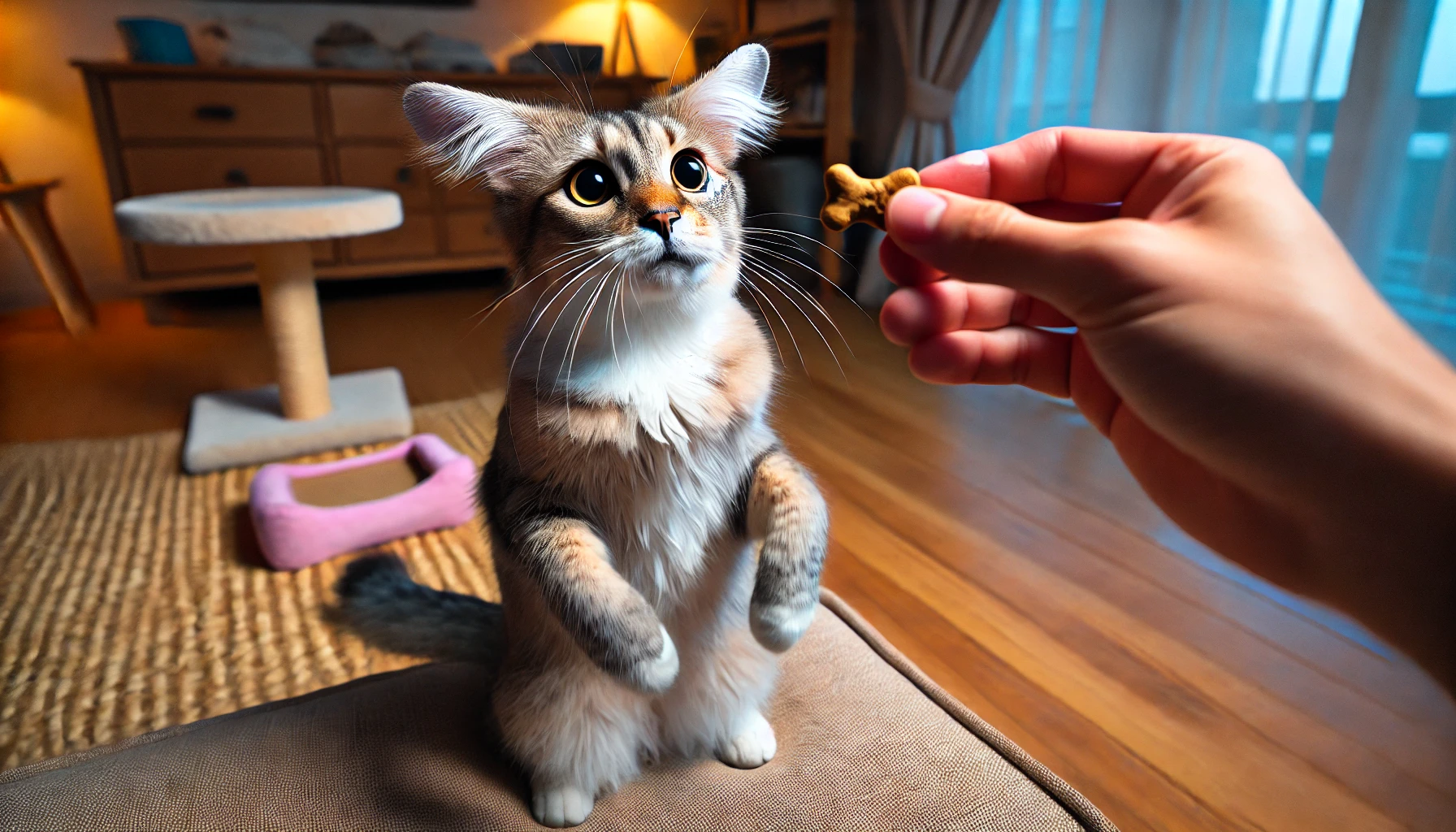
Signs Your Cat Needs a Different Approach
It’s important to recognize when your cat needs a different approach to training.
If your cat continually avoids training sessions, misbehaves, or shows signs of frustration, it may be time to adjust your strategy.
Watch for body language cues—tail flicking, dilated pupils, and ears flattened against the head are all signs that your cat is not enjoying the process.
Changing your training style, adding variety, or taking a break can help reignite your cat’s motivation.
- Frustration: Watch for signals like tail flicking or dilated pupils, which indicate that your cat is not enjoying training.
- Avoidance: If your cat continually avoids training, it’s time to try a different approach.
- Restlessness: Cats that appear distracted or restless during training may need a different reward or a change of environment.
If your cat seems unmotivated, boredom, stress, or even health issues might be the cause. Changing the training approach can help.
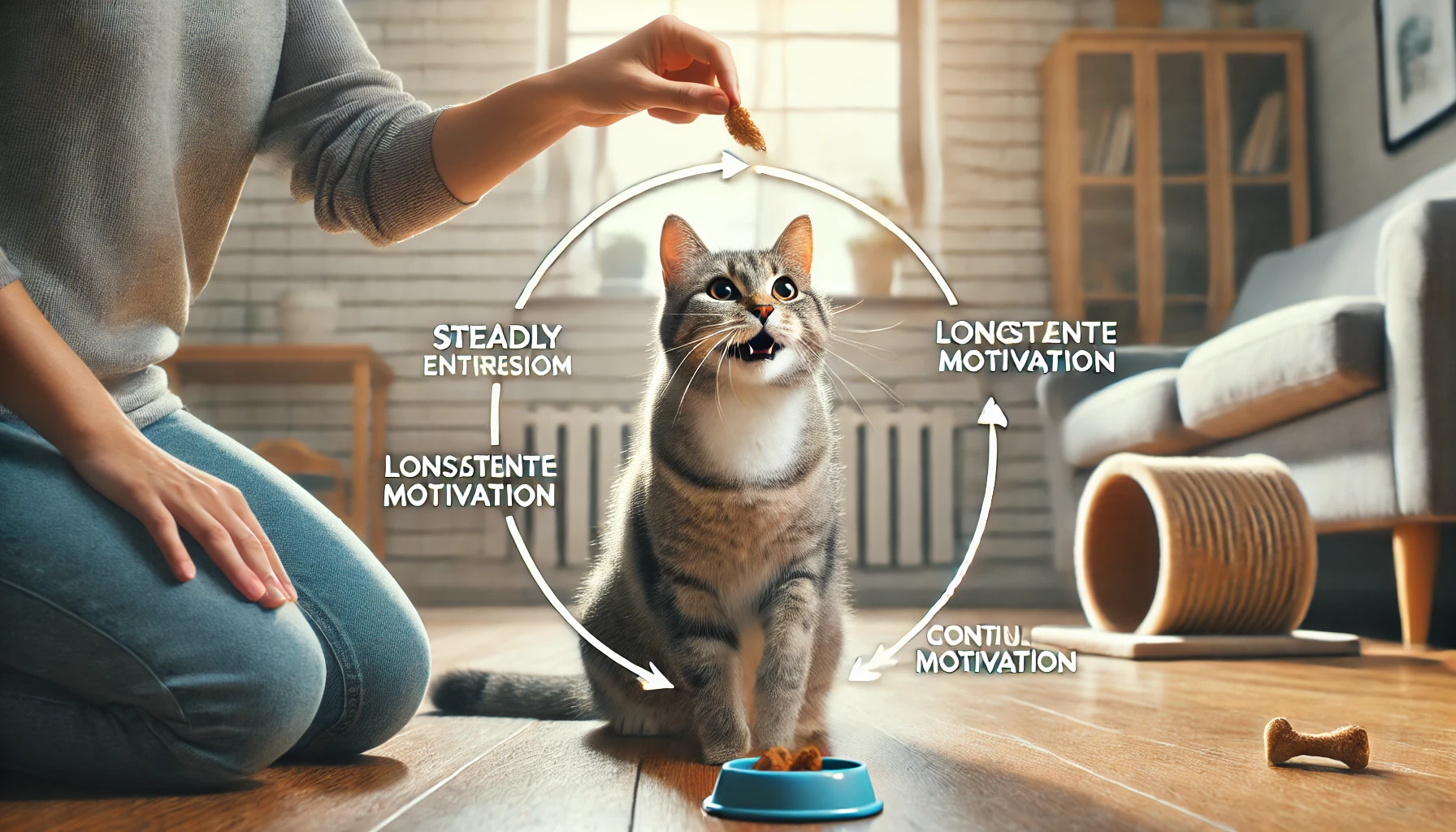
Building Long-Term Motivation Toward Continued Success
Motivating your cat should not depend on temporary gratification; it has to work toward long-term success.
Cats are independent and sometimes unpredictable, and the way to maintain motivation in cat training can vary over time.
Consistent rewarding of desired behaviors, evolving training techniques, and a nurturing environment help ensure that your cat remains engaged in training throughout their life.
It is also important to recognize that, just like humans, what cats find motivating changes with age, so you’ll need to modify your approach accordingly.
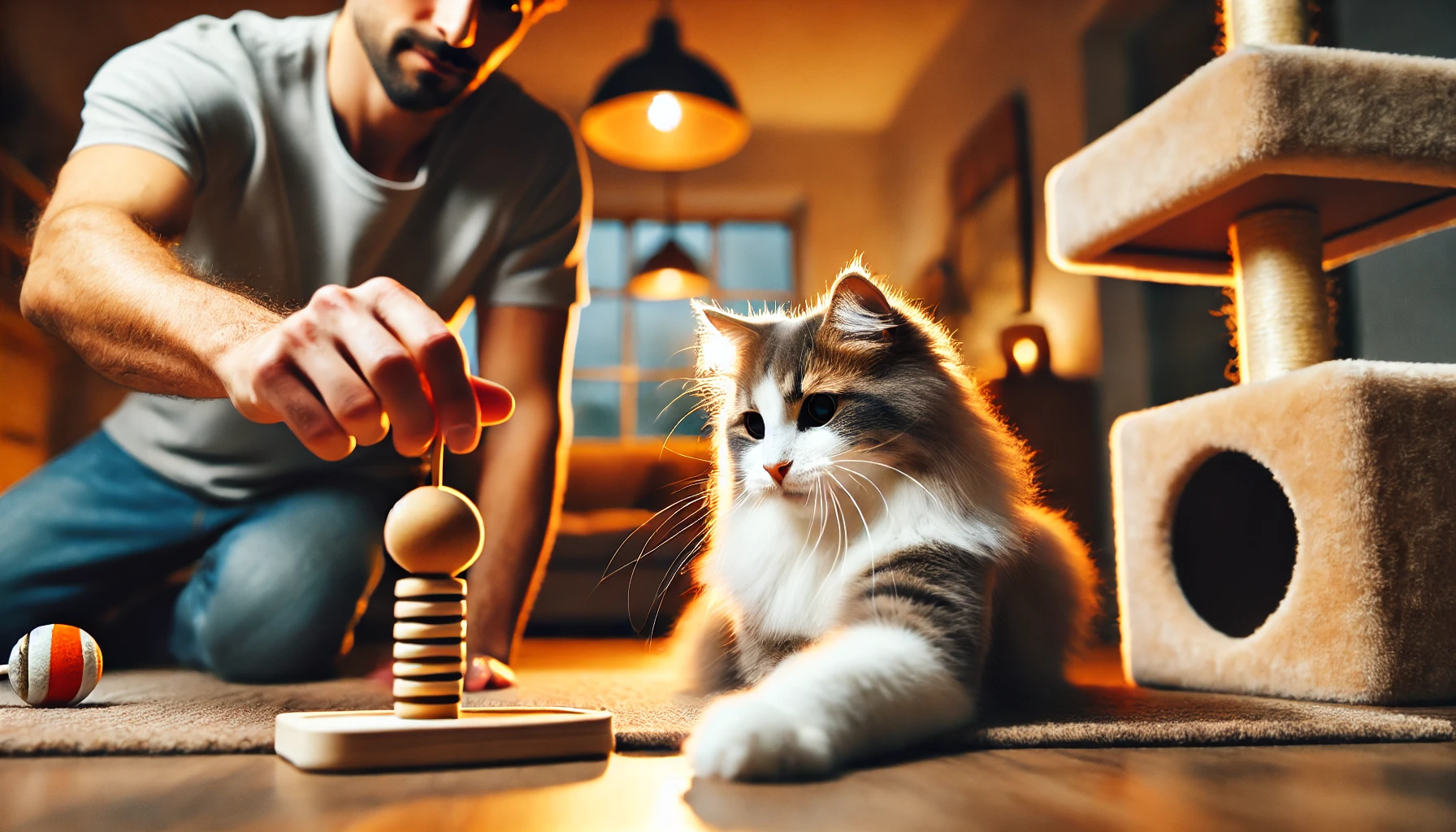
Maintaining Engagement in Training
Long-term motivation in cat training is ensured by keeping your cat interested during training sessions.
Monotony or predictability can cause your cat to become disinterested or bored.
Make sure the sessions are varied, and that different types of rewards are used to maintain interest.
Mixing up activities and introducing new challenges will prevent your cat from losing interest.
- Change the routine: Keep things exciting for your cat by varying the types of training exercises.
- Introduce new rewards: Try different types of treats, toys, and playtime rewards to keep your cat curious and engaged.
- Keep sessions short: Cats have short attention spans, so training sessions should be brief but frequent to maintain their interest.
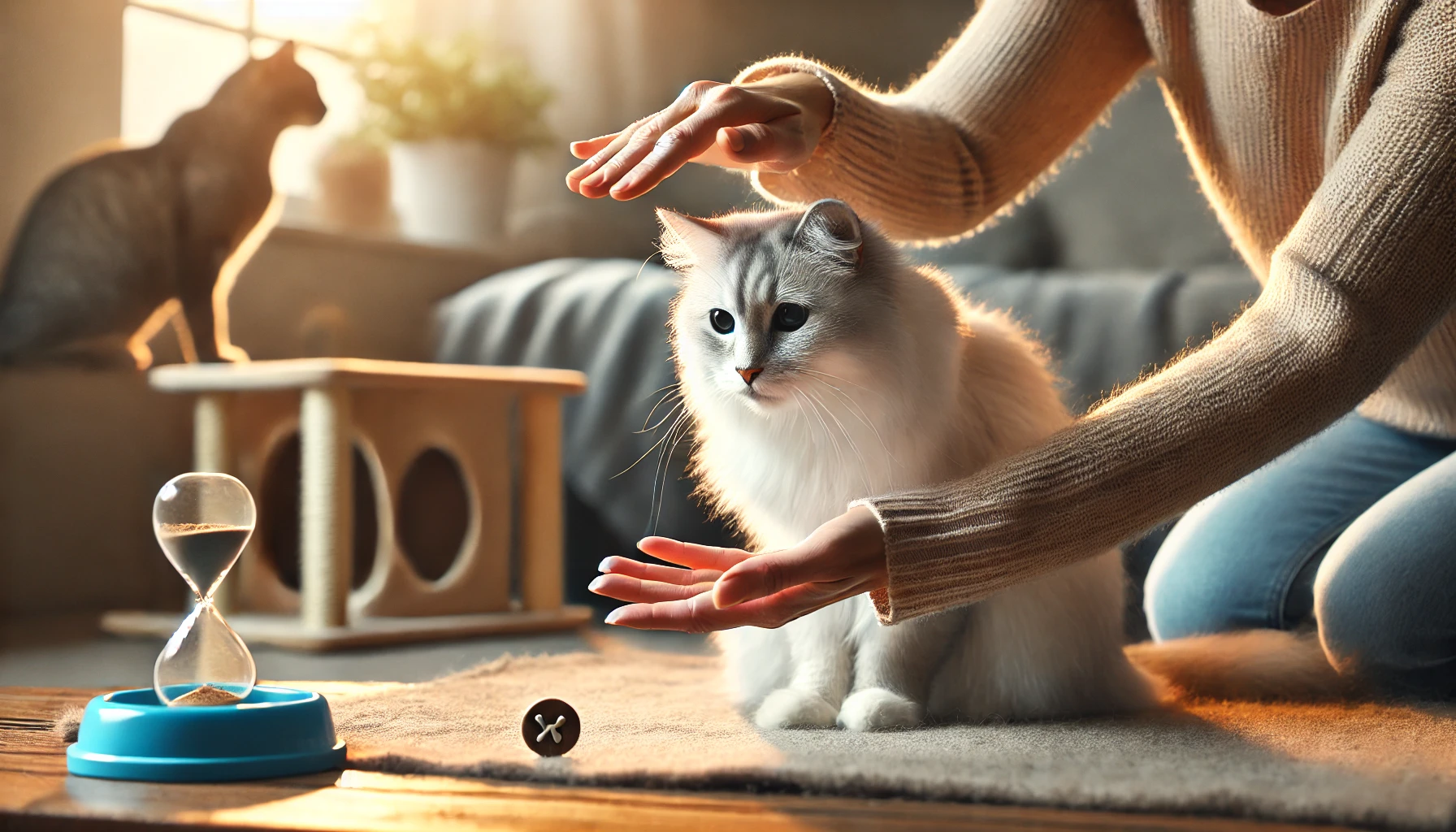
Changing Training Methods as Your Cat Ages
As your cat ages, their motivations may shift.
A kitten may be most motivated by play, while an older cat might respond more to attention or food rewards.
It’s essential to recognize these changes and adapt your training techniques for long-term success.
Be mindful of how your cat responds to different motivators and adjust your approach as needed.
- Know your cat’s preferences: Pay attention to changes in behavior and reward preferences as your cat gets older.
- Adjust techniques: Modify your training methods according to your cat’s age, health, and energy levels.
- Consider health factors: Older cats may need more gentle training methods and additional rest breaks between sessions due to physical limitations.
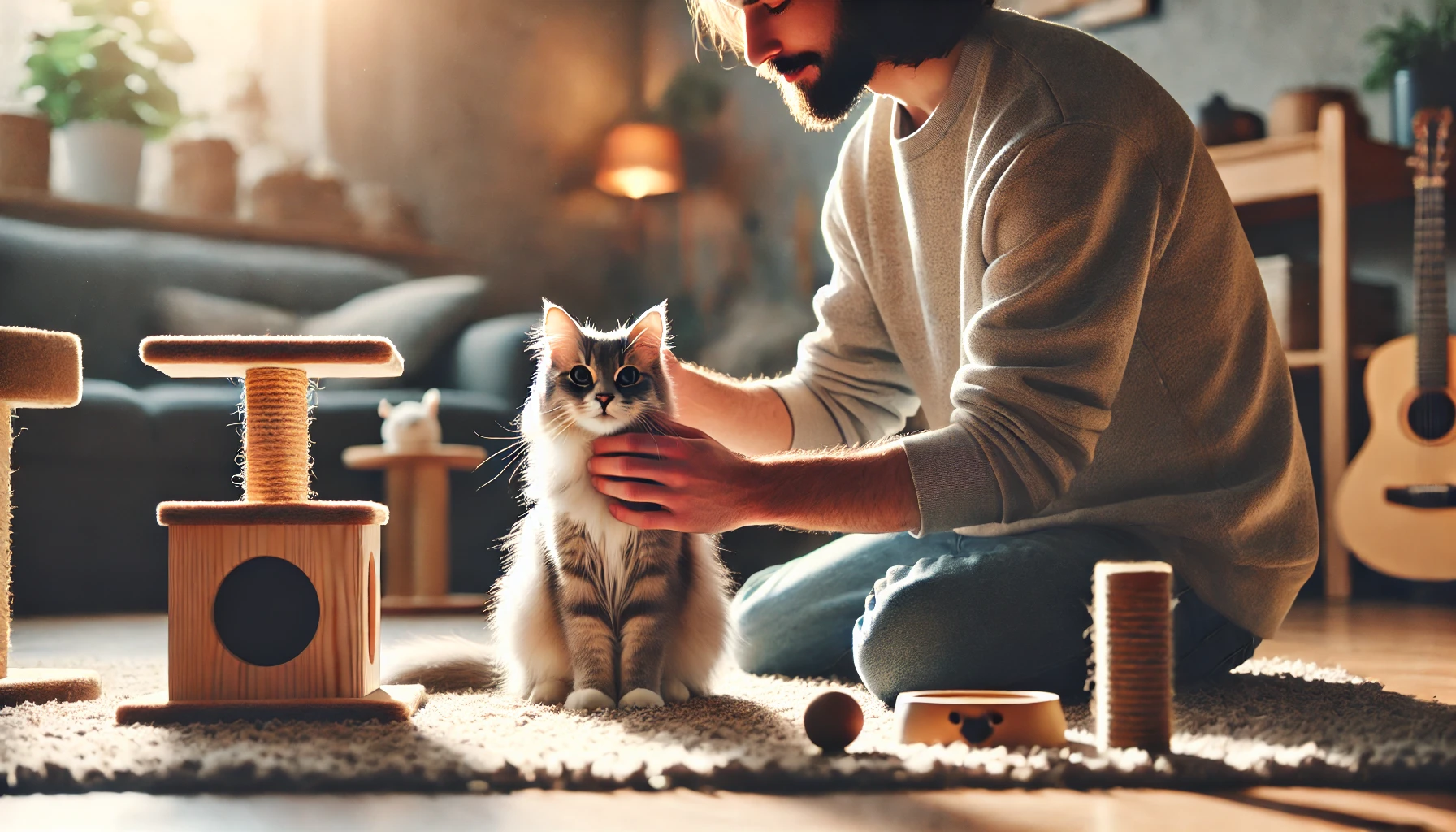
Using Motivation to Strengthen Your Bond
Training your cat isn’t just about teaching tricks or commands; it’s also about building a stronger bond with your feline friend.
Positive interactions during training, such as rewards and praise, help build trust and deepen your relationship.
By creating a positive environment where your cat feels encouraged and motivated, you can turn training into a bonding experience that benefits both of you.
- Build trust: Positive reinforcement and gentle encouragement generate trust between you and your cat.
- Create a positive environment: Ensure your cat feels safe and secure during training, which will make them more willing to participate.
- Celebrate successes: Let your cat know their good behavior has been noticed to boost their confidence.
Maintaining long-term motivation ensures your cat stays interested in training. Evolving techniques and rewards will help sustain engagement.
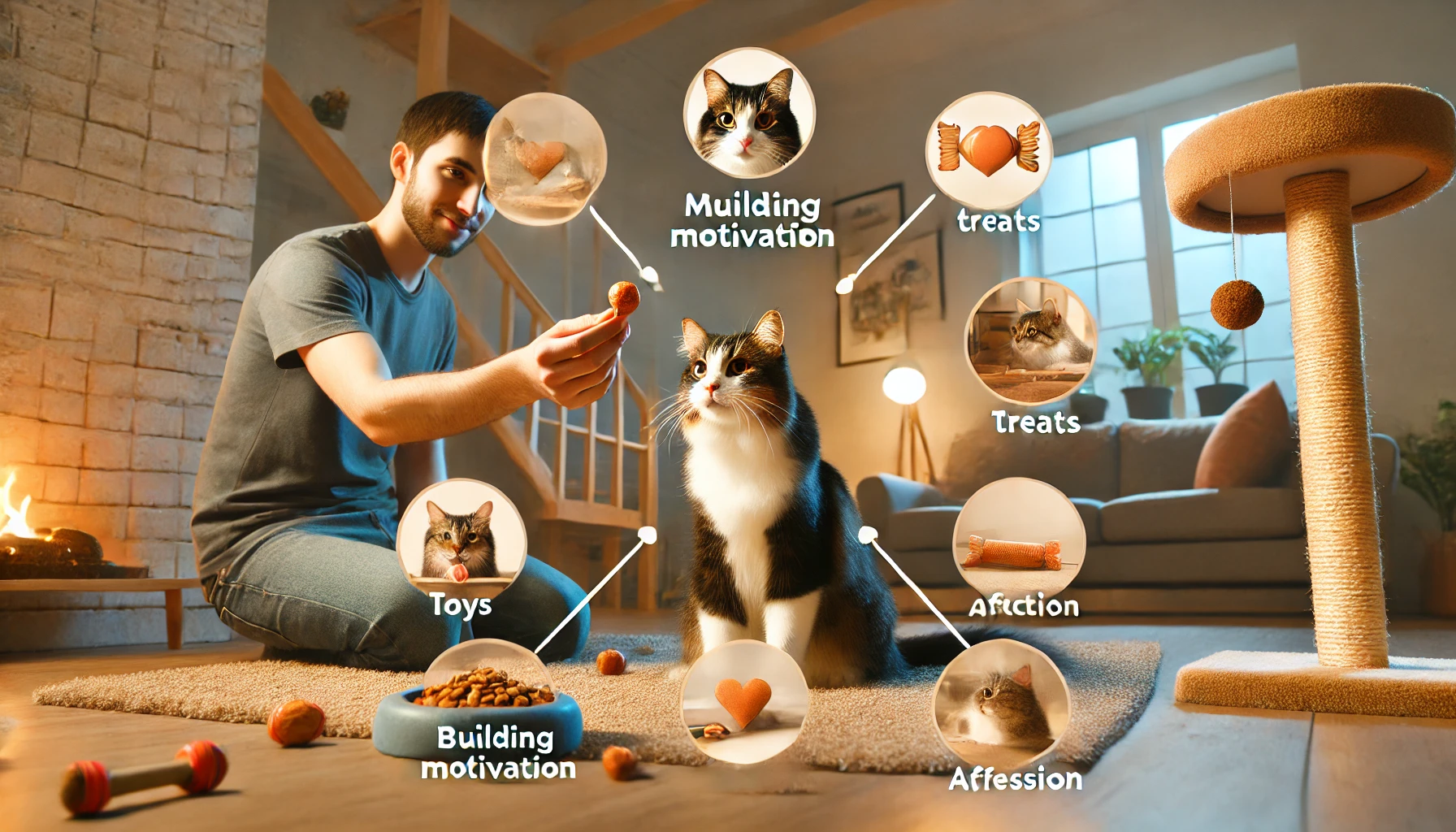
Overview: Building Motivation in Cat Training for Success
Motivation is key in cat training to instill positive behaviors that last long-term.
Understanding your cat’s motivations and using those insights to guide your training techniques makes all the difference between frustration and progress.
Cats are individuals with varying preferences, and once these preferences are identified, you can tailor your approach to make the training enjoyable and rewarding for both you and your feline friend.
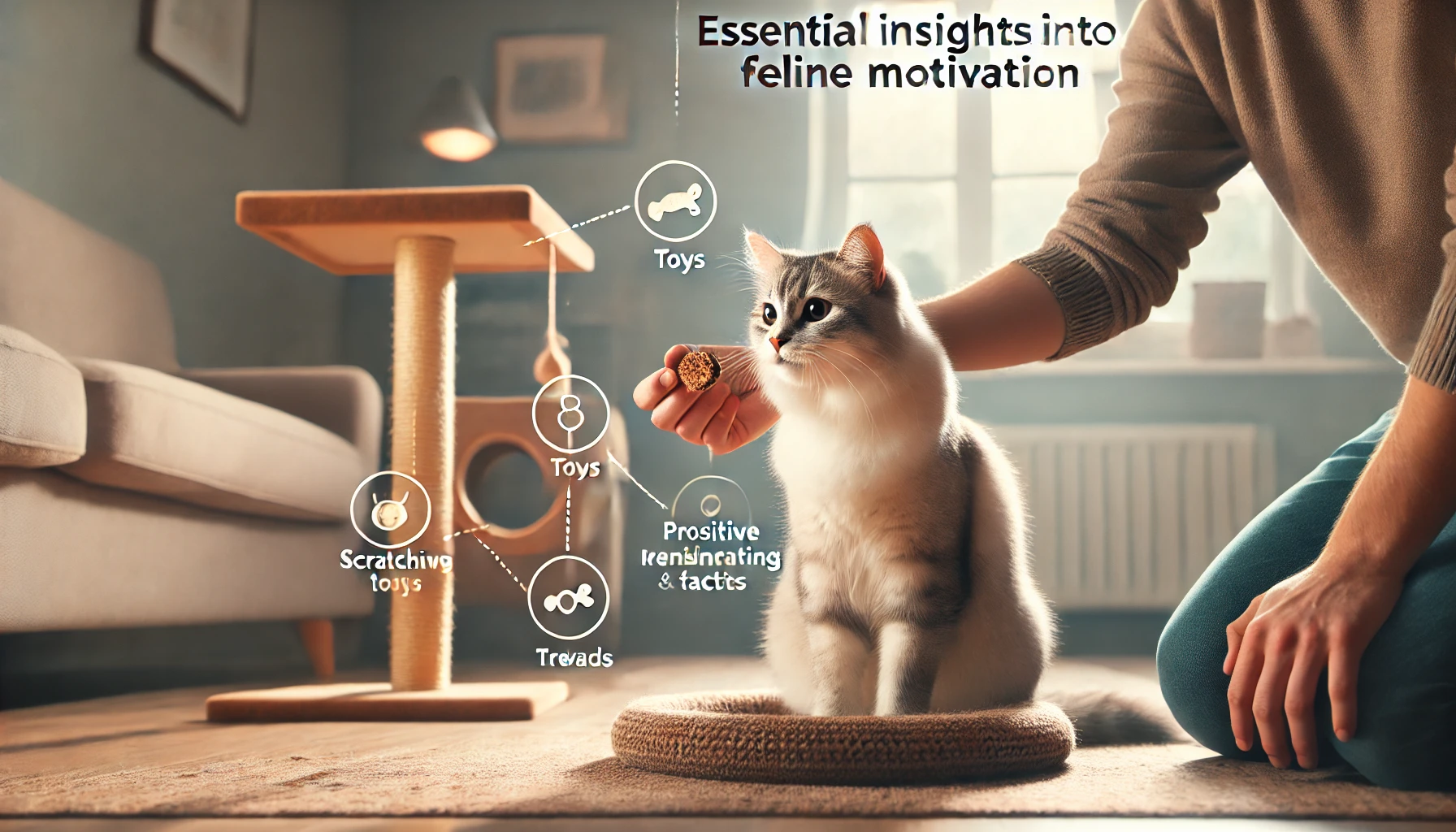
Key Insights into Feline Motivation during Training
This article has covered various aspects of how to maintain motivation in cat training.
From using positive reinforcement through treats and playtime to recognizing and overcoming challenges when your cat doesn’t seem motivated, it’s important to adjust your approach to training based on the specific personality and needs of your cat.
Key points to remember include:
- Positive reinforcement at all times: Cats respond far better to positive rewards—treats, toys, affection—than to punishment.
- Keep training sessions light and short: Short sessions help maintain your cat’s attention and prevent boredom.
- Keep things fresh: Use a variety of training exercises and rewards to maintain your cat’s interest.
- Adapt as your cat ages: Be prepared to change your training methods as your cat’s preferences evolve with age.
- Avoid stressful environments: Provide a calm, supportive space where your cat feels safe during training.
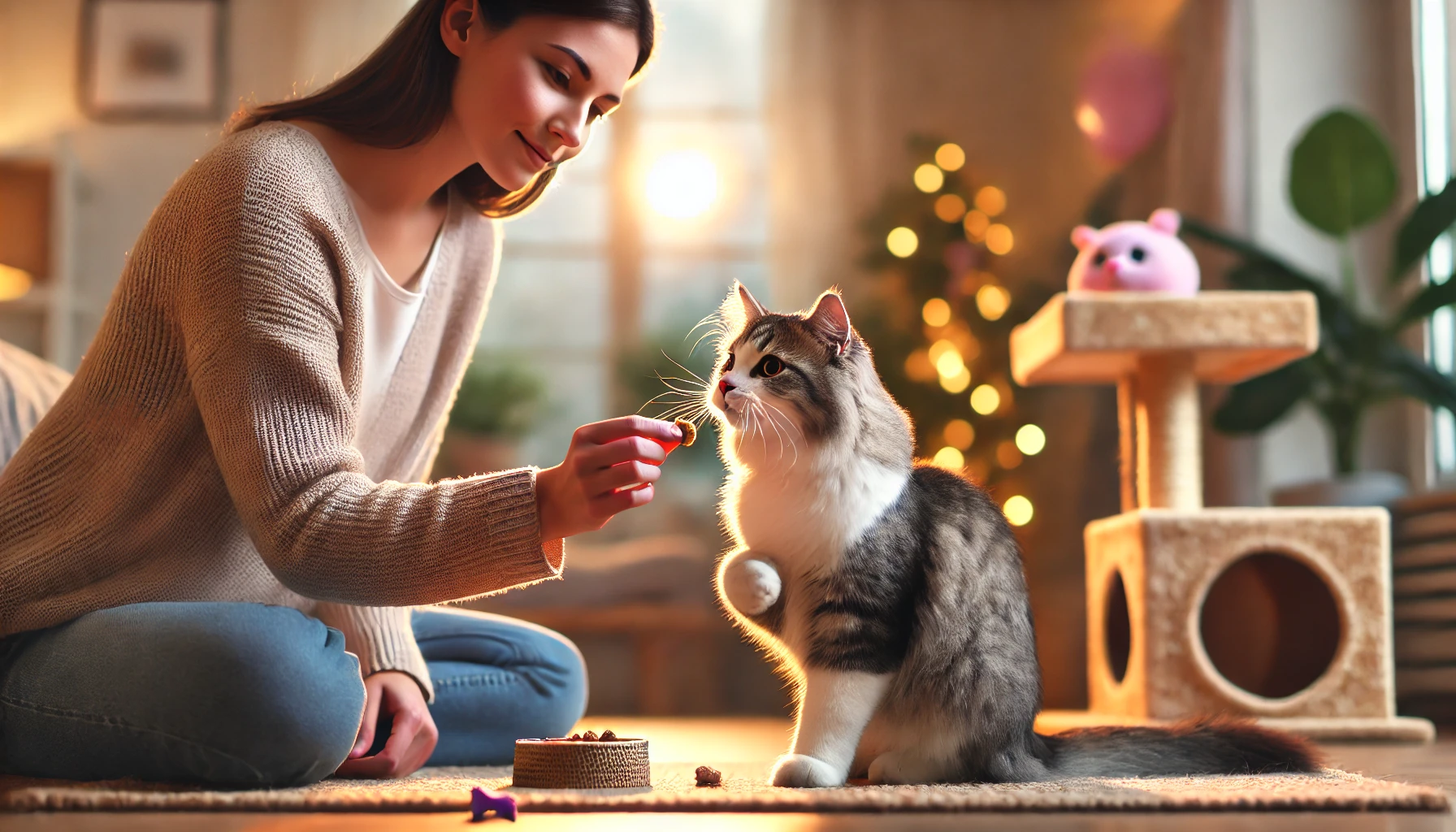
Long-Term Benefits Through Consistent Motivation
Applying the principles of motivation in cat training consistently can lead to long-term success.
Training not only instills new behavioral patterns in your cat but also strengthens the bond between you and your feline companion.
Trust and encouragement will make your cat more willing to participate in training and enjoy the process.
Over time, you’ll notice your cat becoming more responsive, eager to learn, and well-behaved.
A motivated cat is a happier, more confident one, and the positive effects of consistent training will extend into all areas of your relationship with them.

Final Thoughts on Motivation in Cat Training
In conclusion, motivation is the foundation of any successful cat training.
Understanding what drives your cat and applying techniques to keep them engaged can lead to an efficient and enjoyable training routine.
Training a cat requires time, adaptability, and patience, with more emphasis on rewards than corrections.
With the right approach, you’ll see your cat’s behavior improve and your bond grow stronger.
Whether it’s a playful young cat or a more reserved older one, motivation is the key to unlocking their full potential.
Flexibility and attention to their changing needs are crucial for a lifetime of successful and rewarding interactions with your beloved cat.
Understanding your cat’s motivations is the key to successful training. Tailoring your approach leads to better outcomes and strengthens the relationship with your cat.
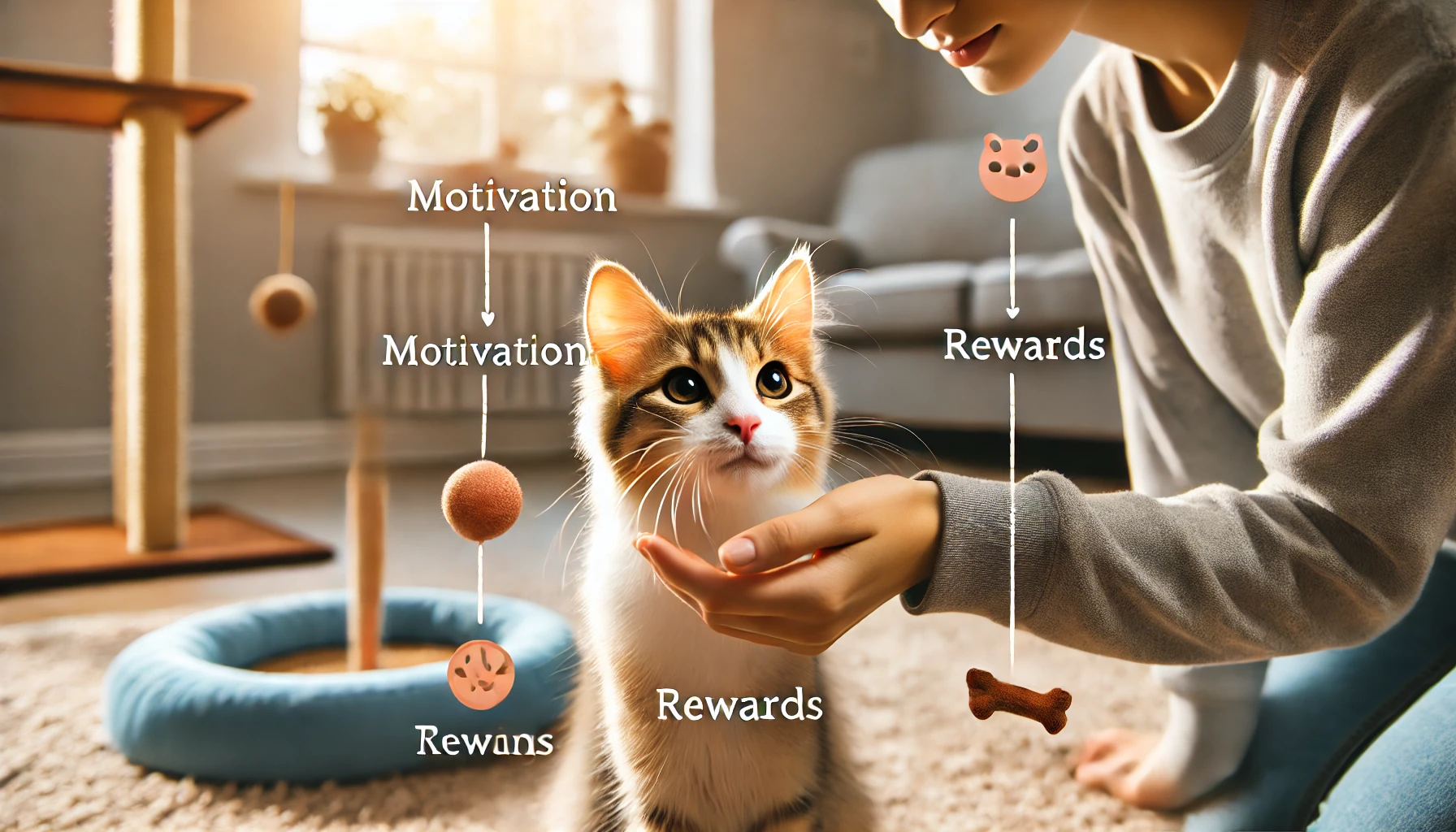
Cat Training Motivation: FAQs
Here are some of the most frequently asked questions about maintaining motivation in cat training and how you can apply it effectively to ensure your cat’s success and long-term engagement.
Why is motivation such an important aspect of cat training?
Motivation helps cats stay active and attentive during training.
You can use positive reinforcement to keep your cat learning new behaviors with interest, making the training enjoyable for both you and your cat.
What are some effective motivators for cats?
Common motivators include treats, playtime, and affection.
Finding out what your cat responds to most will help with training, as each cat is unique regarding the rewards they enjoy most.
How can I keep my cat engaged in training sessions?
Keep training sessions short, fun, and engaging.
Add variety by switching between rewards and exercises.
This will prevent boredom and keep your cat curious and interested throughout the training.
How often should I reward my cat during training?
Reward your cat every time they perform the desired behavior.
As they get used to the training, gradually reduce the frequency of rewards and replace treats with praise or affection to maintain motivation.
What if my cat doesn't seem motivated?
If your cat seems unmotivated, check for stress or boredom.
Changing the environment, introducing new rewards, or shortening sessions can help rekindle their interest and restart the training process.

